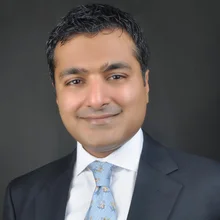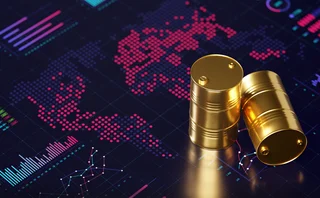
Precious metals house of the year: TD Securities
Energy Risk Awards 2020: Canadian bank supports UK Royal Mint’s first gold ETF launch

TD Securities set out to grow a precious metals business in 2010, at a time when many banks were withdrawing from the market. Over the past decade, it has built out a global offering spanning New York, London and Singapore, increased its market share and gained customers not just in the core mining sector, but also refiners and consumers of precious metals.
This steady commitment to the sector is reflected in TD Securities’ success this year, which has won it the Precious metals house of the year award for the second consecutive year. Its growth strategy has enabled it to become very competitive, says David Swinburne, New York-based global head of metals and energy at TD Securities.
“Our ability to successfully grow a comprehensive global offering has allowed us to pass along significant added value to our customer base,” he says.
A major client-led initiative that came to fruition earlier this year was the development of a gold exchange-traded fund (ETF) with the UK Royal Mint – the first such product offered by the UK state-owned minting facility.
Due to a long-standing relationship with the UK Royal Mint, TD Securities’ London-based head of Emea and India commodities sales, Vikas Chamaria – who has more than 20 years’ experience in precious metals markets – was called on for advice in 2018 when it wanted to enter the wealth management space. “The Royal Mint has a fortified vault that was built during the Cold War era on a 32-acre secure site in Wales,” he says. “Putting my physical [markets] hat on, I suggested ways to operationalise and optimise their strategy for an ETF,” Chamaria recounts.
Gold ETFs are backed by physical holdings, so TD Securities was able to advise the Mint on how to design and manage the product, as well as providing a loan facility and sourcing physical gold to back the investment product. “TD provided advice on logistics and structuring, as well as helping with pricing, sourcing and moving the metal from London to Wales, storing it and managing the price risk,” Chamaria continues. “TD was also willing to offer its balance sheet to help facilitate the trading of gold for the product. So [our role] was not just about developing an idea, but also helping with everything from the operational aspects, to financing, right through to the launch date and beyond.”
The Mint launched the product with multi-manager ETF platform Han ETF in February 2020, and has since attracted more than $260 million in holdings. Investors appreciate the credit risk implications of a product from a government-backed institution, according to Chamaria, as well as the lower product fees it can offer because the Mint owns its own vault.
The Mint has long-term relationships with a number of financial services firms, including TD Bank, but Jatin Patel, head of wealth management, says TD was “hugely supportive” during the development of the fund. “TD’s help was crucial during the nine-month discovery and design phase. They were also very important in setting up the product,” Patel says, highlighting the bank’s “very competitive” pricing on the loan facility it provided to the Mint. “Post-launch, we have maintained our strong relationship with TD for buying metal to process into coins and bars to sell to consumers around the world.”
Our ability to successfully grow a comprehensive global offering has allowed us to pass along significant added value to our customer base
David Swinburne, TD Securities
While investors had already started to return to gold last year, the uncertainty swirling around the global economy as a result of the Covid-19 pandemic has driven even more interest in gold as an investment safe haven in recent months, although there have also been periods of volatility. During the first quarter of 2020, the average price of gold rose to US$1,582 per ounce, 6.74% above the previous quarter and its highest average since 2013.

“As the impact of the virus reached Europe, we saw gold rally fundamentally on the back of expected stimulus from central banks to offset the deflationary effect of the pandemic,” Swinburne explains. “But then we saw it sell off extremely hard as traders moved to cash – the market was not trading on supply and demand fundamentals, or even underlying investment fundamentals,” he continues. “Everyone moved to the sideline, took a breath and looked at the landscape before the next move.”
When it comes to other precious metals markets, environmental issues will continue to exert a major influence on future prices, Swinburne says. This is particularly so for platinum group metals, where prices rose by 54% over the course of 2019 as the automotive sector eyed upcoming emissions rules from a number of regions, including China. This factor is expected to continue to affect long-term demand in these markets. “There is no question that the environment is going to play a big role in how these markets develop going forward,” Swinburne says.
Only users who have a paid subscription or are part of a corporate subscription are able to print or copy content.
To access these options, along with all other subscription benefits, please contact info@risk.net or view our subscription options here: http://subscriptions.risk.net/subscribe
You are currently unable to print this content. Please contact info@risk.net to find out more.
You are currently unable to copy this content. Please contact info@risk.net to find out more.
Copyright Infopro Digital Limited. All rights reserved.
As outlined in our terms and conditions, https://www.infopro-digital.com/terms-and-conditions/subscriptions/ (point 2.4), printing is limited to a single copy.
If you would like to purchase additional rights please email info@risk.net
Copyright Infopro Digital Limited. All rights reserved.
You may share this content using our article tools. As outlined in our terms and conditions, https://www.infopro-digital.com/terms-and-conditions/subscriptions/ (clause 2.4), an Authorised User may only make one copy of the materials for their own personal use. You must also comply with the restrictions in clause 2.5.
If you would like to purchase additional rights please email info@risk.net
More on Commodities
Energy Risk Asia Awards 2024: The winners
Winning firms adapt to change with exemplary risk management skills
Foreign funds are bulls in China’s onshore commodity futures
Growing participation from overseas investors is boosting liquidity in what’s already a boom market
Energy Risk Software Rankings 2024: IT demands increase amid rising risk
Heightened geopolitical and credit risk increase requirements on commodities software
Energy Risk Asia Awards 2023: The winners
Winning firms demonstrate resilience and robust risk management amid testing times
ION Commodities: addressing the market’s recent pain points
Energy Risk Software Rankings winner’s interview: ION Commodities
Energy Risk Commodity Rankings 2023: adapting to new market dynamics
Winners of the 2023 Commodity Rankings provided reliability when clients faced extreme change
Energy Risk Software Rankings 2023: managing uncertainty
Unpredictable markets make CTRM software choices key
Navigating the volatility and complexity of commodity markets
Commodity markets have experienced significant challenges since the Covid-19 pandemic, the conflict in Ukraine and the subsequent sanctions imposed on Russia. These unprecedented events have caused fluctuations in supply and demand, disrupted global…








